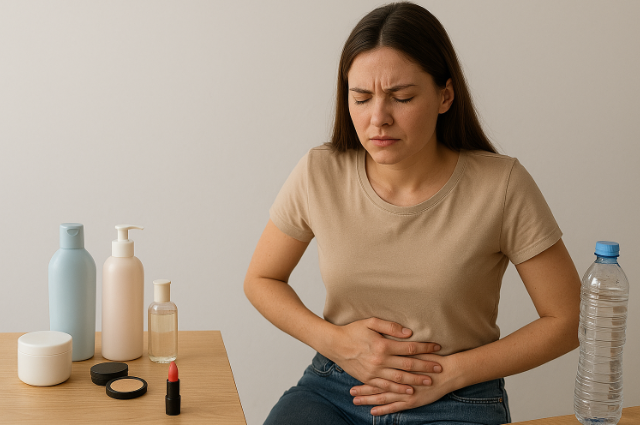
In 2025, something unusual is happening to young women, something most families, schools, and workplaces are not prepared to talk about. Hormonal disorders like PCOS, PMDD, and symptoms of estrogen dominance are showing up earlier than ever before. Girls barely out of their teens are facing issues their mothers encountered only in their late twenties or thirties. What used to be rare now feels almost common, and every group of friends has at least one person quietly struggling.
The rise isn’t just a coincidence. Studies show that PCOS prevalence in India ranges widely from 3.7% up to 22.5% but the number of young women reporting symptoms is unquestionably higher than before. PMDD, a severe emotional condition linked to the menstrual cycle, affects about 8% of women, yet most suffer in silence. Estrogen dominance, though not always formally diagnosed, has become a familiar phrase among women dealing with sudden mood swings, painful periods, bloating, and constant fatigue.
But statistics alone don’t show the emotional reality. Real stories do. One of my friends, who always had a stable cycle, suddenly found her periods becoming unpredictable. They would arrive weeks late, sometimes skipping entirely. Her skin changed, her weight fluctuated, and she felt irritated almost all the time. At first, she blamed stress. Only later did tests reveal PCOS. She told me she felt betrayed by her own body, like something inside her had shifted without warning.
Another girl I met shared how the week before her period had started to feel like a storm inside her chest. She described it as waking up in a body that felt too heavy and a mind that wouldn’t stay steady. She cried over small things, argued with people she loved, and felt guilty afterward. When she finally spoke to a doctor, she learned it was PMDD. The relief she felt wasn’t because her condition had vanished; it was because she finally had a name for it.
These stories are becoming common, and the causes run deeper than stress or genetics. Research points strongly toward ENDOCRINE- DISRUPTING CHEMICALS (EDCs). These chemicals are hidden everywhere in plastics, makeup, lotions, perfumes, soaps, food packaging, and even household dust. When they enter the body, they can act like artificial hormones. They confuse hormonal signals, mimic estrogen, or interfere with the body's natural hormone processing.
Studies show that women with PCOS often have HIGHER LEVELS OF BPA, PARABENS, AND PHTHALATES in their bloodstream. These aren’t rare industrial toxins; they come from things we hold, wear, and apply every day. The bottle we drink from. The cream we use. The container we microwave food in. The packet our snacks arrive in. Over time, these small exposures add up, and the body struggles to stay balanced.
I once spoke to a girl who had intense bloating and painful periods every month. She told me she didn’t think much about the plastic she used daily, bottles, containers, and wrappers, because everyone around her used the same things. When her doctor suggested reducing plastic exposure, she thought it sounded silly. But after switching small things like using steel bottles, reducing packaged foods, and choosing simpler skincare, she noticed a shift. Not a miracle, but enough to feel lighter, calmer, more in control.
Another young woman admitted she used to buy every trending cosmetic product she saw online. Her shelf was full of fragranced mists, lotions, and makeup formulas. It was only after months of mood swings and irregular cycles that she learned many of those products contained chemicals that mimic estrogen. She told me she never imagined that something as harmless-looking as a body mist could affect her hormones.
Estrogen dominance plays a big role in this. It doesn’t always mean the body produces too much estrogen. Often, the body CAN'T CLEAR IT PROPERLY because of all the external hormone-mimicking chemicals entering it. Add processed foods, poor sleep, long screen time, and rising stress, and the body gets overwhelmed. The symptoms painful periods, bloating, breast tenderness, anxiety, and irritability, become a monthly struggle.
What makes all this harder is the emotional weight. PMDD especially feels like a shadow that appears every month without warning. Women describe it as feeling like a different person, someone they don’t recognise. They blame themselves, hide their feelings, or assume they’re “too sensitive,” when in reality, their bodies are reacting to a hormonal imbalance influenced by their environment.
The medical community is now urging people to pay attention to these invisible triggers. Hormonal disorders aren’t just “women’s issues.” They reflect the environment we live in, the products we use, the air we breathe, the food we eat, and the chemicals we touch without thinking. It’s a lifestyle and environmental issue as much as a medical one.
What gives hope is the increasing awareness. More young women are learning to read product labels, avoid unnecessary chemical exposure, and understand their cycles better. The conversations are becoming louder and more honest. Women are no longer blaming themselves; they’re questioning what changed around them.
If 2025 has revealed anything, it’s that hormonal disorders are not personal flaws. They are warning signs of a world filled with hidden disruptors. The sooner we recognise these signals, the sooner young women can reclaim control over their bodies, their energy, and their peace.
. . .
References:
